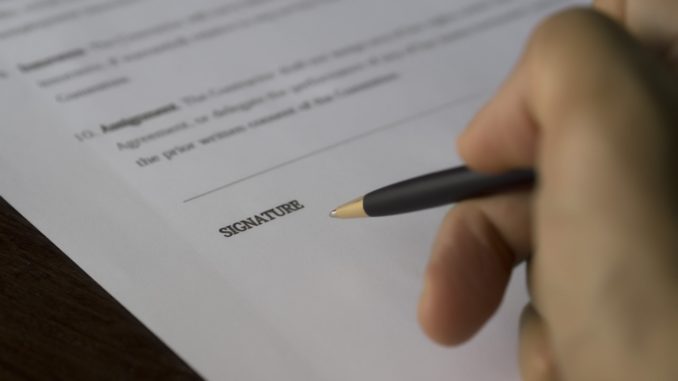In the digital age, several industries still rely on faxed communications for daily business operations. One of these industries is the medical industry. Whether it is a doctor’s office or an insurance company, faxed documents are one of the ways that these places can communicate sensitive patient information while remaining compliant with the Health Insurance Portability and Accountability Act (HIPAA).
Businesses that work in the medical industry must ensure hipaa compliance, which may make them unsure about using cloud faxing services. This is especially true if the business needs to get signatures on documents they send back and forth via fax machine. However, e-signatures can replace hand-written signatures when using cloud faxing services, all while remaining HIPAA compliant. Healthcare providers and other entities in this industry can learn more about how to use e-signatures with electronic information transfers below.
HIPAA Regulation of E-Signatures Explained
HIPAA is a federal law that was first enacted in 1996. It sets standards for how to protect a patient’s sensitive information and prevent it from being disclosed to any other person or business without the patient’s knowledge or consent. Sending and receiving patient information via fax has to be done with extreme care to remain compliant with the rules set forth by HIPAA.
While most of the HIPAA guidelines are very specific and strict, e-signatures fall into a bit of a grey area in terms of HIPAA compliance. According to the Department of Health and Human Services (HHS) website, there is no current standard for how to handle electronic signatures under HIPAA rules. Without such standards, any entities covered under HIPAA must ensure that all electronic signatures used to result in a legally binding contract, within the limits of relevant local, state, and federal laws.
On the other hand, the Office for Civil Rights (OCR) states that using electronic signatures satisfies HIPAA privacy rules already so long as the electronic contract satisfies relevant portions of the state contract law. Essentially, using electronic signatures does not violate HIPAA rules so long as the state laws are satisfied.
HIPAA Rules for E-Signatures
Businesses that operate in the healthcare industry can use e-signatures while remaining HIPAA compliant so long as they follow the rules set forth by the Federal Electronic Signatures in Global and National Commerce Act and the Uniform Electronic Transactions Act. These two acts set forth rules on how to allow user authentication while maintaining the integrity of a message and reducing the chances of tampering. These types of e-signatures are considered as authentic as real ones and are legally binding. The essential components that must be covered when working with HIPAA compliant e-signatures are:
- Since HIPAA does not set forth any more rules for e-signatures than what is required by federal law, then an e-signature is considered HIPAA compliant as long as those laws are satisfied. The person signing the document must receive a copy of the document they signed once it is complete.
- Authorization is one of the bigger challenges when using e-signatures for HIPAA-compliant documents. Documents must be sent to a patient using a method that is both validated and secure to avoid a breach of privacy, which includes ensuring that the documents are sent to the correct person. This can be done through common security measures such as security questions or two-factor authentication.
- Document Integrity. Documents that are signed, sent, and received electronically must be protected against tampering after the patient fills out the form and signs it. This rule is set forth by HIPAA. To do this, the document should be locked behind a password or other means of authentication so that only authorized users can access it.
- Non-repudiation. In terms of data security, non-repudiation is the assurance that the validity of something cannot be denied. E-signatures must be obtained in such a way that the person signing cannot deny having done so in order to be HIPAA compliant.
- Document control. Entities covered under HIPAA laws must be sure they have control of all relevant documents. They must be able to prove the authenticity of the documents they have signed by patients as well as the signature of the patients after it has been signed. This can be done by using digital certificates that certify a document’s authenticity or by downloading records and storing them somewhere else. These steps are critical in the event of an audit.
Find Out More About Using Cloud Faxing Services for HIPAA Compliant Documents
Allowing documents to be signed electronically can be a major boost for administrative functions in any office that is covered under HIPAA law. Cloud faxing services often offer their own safe and secure environment for offices to use e-signatures while remaining HIPAA compliant. These platforms are designed to help businesses in the medical industry streamline their workflow without sacrificing the security of patient information, as well as other sensitive documents. Find out more about how cloud fax services can help your business today.














Add Comment